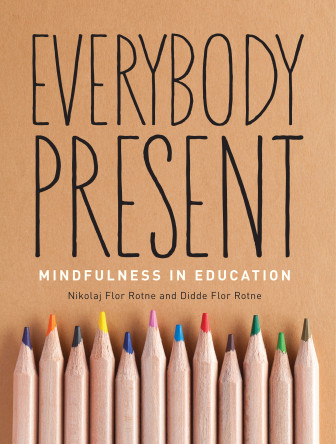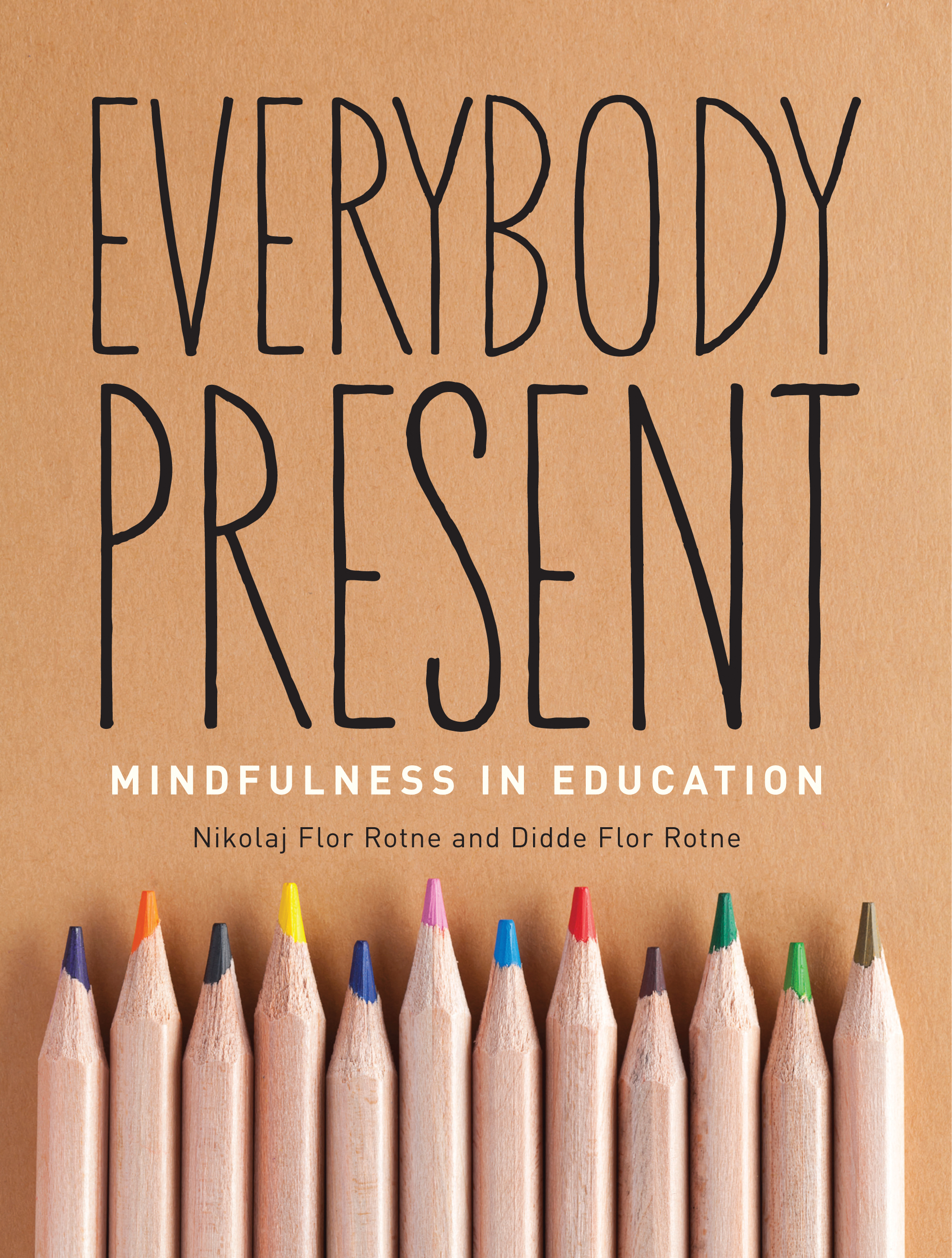 Everybody Present: Mindfulness in Education
Everybody Present: Mindfulness in Education
Nikolaj Flor Rotne and Didde Flor Rotne
Parallax Press, 2013
141 Pages
By Gail Bush
Progressive educator John Dewey held that education is not preparation for later life but that it should be conceived of as the full meaning of the present life. Danish educators Nikolaj and Didde Flor Rotne promote the benefits of mindfulness in a similar consideration. While tenets of mindfulness foster learning in a safe and caring environment, the life-long advantages are not contained by classroom walls. The authors, who are the founders of Denmark’s Educational Mindfulness Program, use clinical research to present their approach to transformative mindfulness practices. This guidebook for educators is applicable to all youth workers for both serving youth and for themselves, especially regarding stress and conflict-reduction techniques.
The authors define mindfulness as “a universal human capacity that is accessible to everyone. Originating in Buddhist philosophy and psychology, mindfulness embraces a way of being present in the world.” They use research, instructional strategies, parables, case studies and exercises to communicate the power of this quiet and unassuming path to the profound discovery of knowing oneself. Creating a safe and thoughtful environment to engage youth might not be a new arrow in your back-to-school quiver, but the emphasis on being present within oneself, on breathing and on listening might be worth revisiting.
Concepts of mindfulness that resonate in contrast to our chaotic and cacophonous world are intention, attentiveness and attitude, with threads of silence and gratitude woven throughout.
Intention involves the motivation to have conscious direction to create more joy and to relieve suffering. With the rapid-fire pace of communication in the digital age, intention seems less present in daily decision-making. This concept is about making a point of discussing and highlighting desired outcomes of actions and behaviors.
Attentiveness to accepting what comes to our thoughts and feelings without judgment brings a focused calm. Two types of attentiveness include focused attentiveness, as toward an object or thought, and open attentiveness to registering that to which we are exposed. Both types of attentiveness bring clarity to ourselves, our thoughts and feelings and to those around us.
Attitude to one’s thoughts and feelings belies a sense of compassion, acceptance and detachment. This detachment simply avoids judgment, letting go of passing thoughts and feelings in order to stay grounded in the present moment.
So how does mindfulness practice relate to education and serving youth? Clearly there are benefits for the educators and youth workers themselves to feel more fully engaged and intentional in their practice. As we each slow down, take a deep breath, focus consciously on the moment at hand and have compassion, we become more sensitive and effective. In turn, mindfulness practice empowers us to foster stronger relationships with both our colleagues and youth as we feel more centered within ourselves.
We model our ability to reduce stress and conflicts. We focus on today before tomorrow. We demonstrate how we exercise gratitude. Through exercises in breathing, silence and deep listening, we create an environment that has the effects of a safe haven, an oasis within which each learner might have the opportunity to listen to his or her inner voice.
The extroverted culture that permeates school and society presents hazards for many youth today. Whether the challenge is emotional, intellectual, physical or social, or any combination thereof, the mindfulness practice that “Everybody Present” promotes creates a positive redirection inward.
This strengthening of the self through the book’s variety of exercises not only benefits each participant but is contagious. The authors describe research that cites mirror neurons as “the nerve cells in the brain that can direct a certain event but that also become active when observing another person’s action or feeling.” When it seems that stress or calm are contagious, mirror neurons are in action. The research also shows that only a bit of the action needs be observed for the human mirror neurons to infer the completed sequence.
Those who are sanctioned with the creation of learning and other environments in the service of youth are responsible for creating intentionally attentive, safe havens for growth. Reduction of stress and conflict is key, but equally important is a self-awareness actualized by compassion and understanding. Mindfulness practice as demonstrated in “Everybody Present” has universal appeal and will resonate particularly with youth workers who are charged with testing, evaluating and assessing students ad infinitum.
Further inquery
The authors Flor Rotne briefly mention one aspect of Stephen Covey’s work. While his “highly effective habits” are well-known (with preference to habit No. 1), it is recommended that the reader start with his eighth habit, “The 8th Habit: From Effectiveness to Greatness” published in 2005 by The Free Press.
For a deeper background on the psychology of mindfulness and introduction to mindful learning, read Harvard education professor Ellen J. Langer’s books, “Mindfulness” (De Capo Press, 1990) and “The Power of Mindful Learning” (De Capo Press, 1998).
For specific information about teaching meditation to children, see Christopher Willard’s book, “Child’s Mind: Mindfulness Practices to Help Our Children Be More Focused, Calm, and Relaxed,” published by Parallax Press, 2010.
For resiliency, concentration, and self-awareness for at-risk youth populations, see Gabriel Ethan Kram and James Daren Dickson’s 2011 publication, “Applied Mindfulness: Inner Life Skills for Youth.”


























